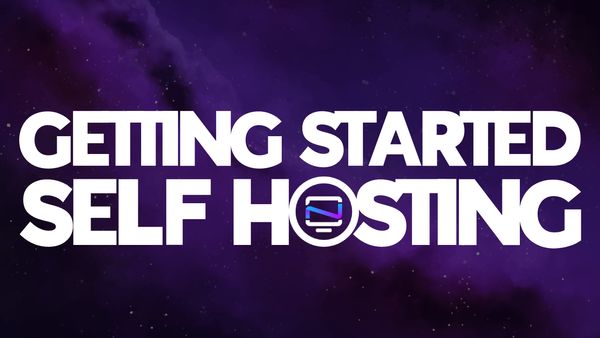Noted Survived Top 3 on Hacker News - How Did it Affect My Homelab?
What happens when a Homelab gets 1.3 million requests in less than 24 hours? See how Noted survived top 3 on Hacker News. 📈
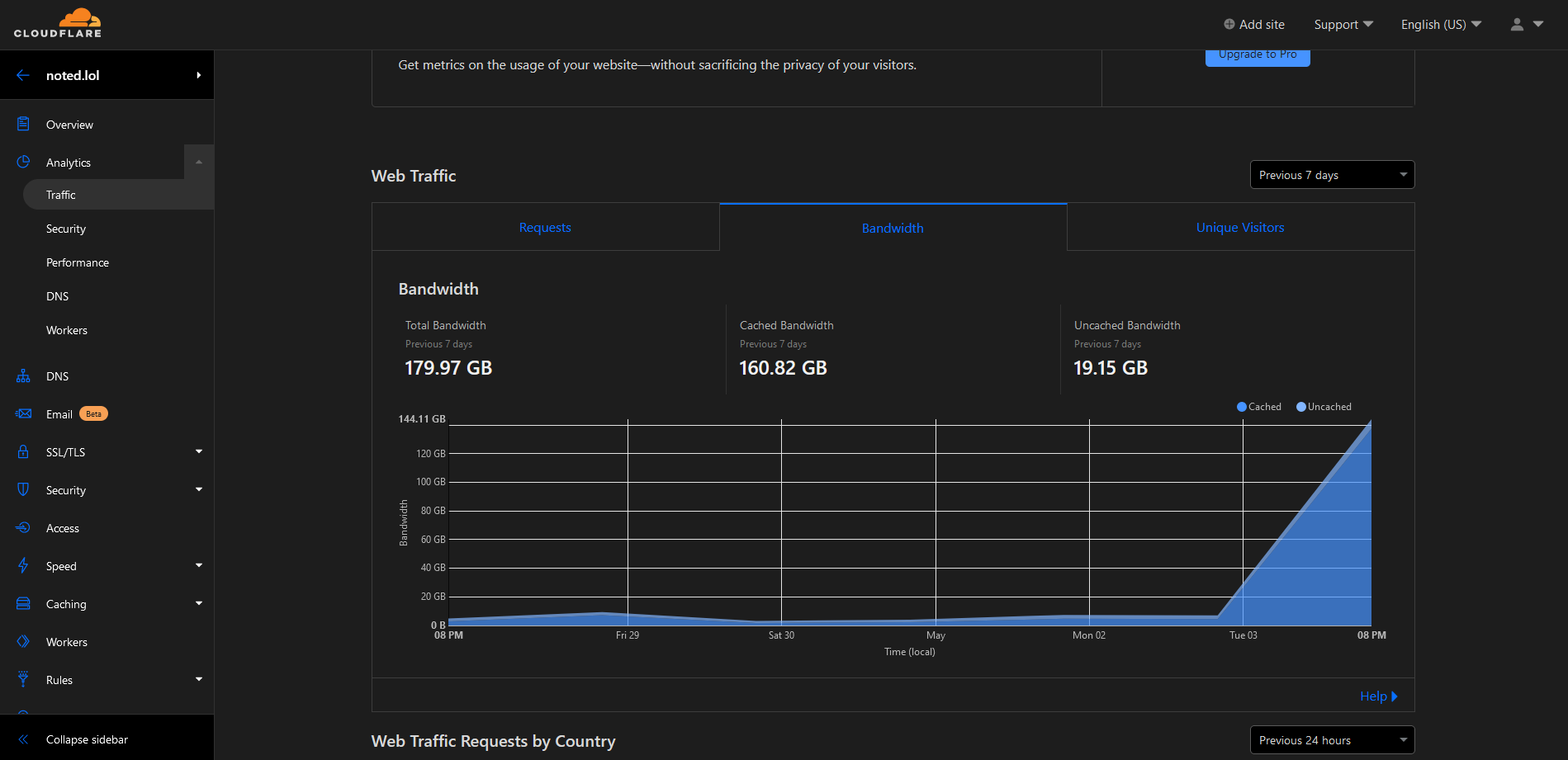
First and foremost, I want to thank the readers for sharing Noted articles. It's not very common in an era where life is so fast paced and trust me, I know time is everything. So it means so very much when I see articles being shared or Noted being talked about on podcasts.
Our article "What are your Most Used Self Hosted Applications" reached the number 3 spot on Hacker News yesterday morning at around 11am. I wanted to share the experience I went through watching this all unfold. I'm not going to lie, I was very nervous because I have heard about the infamous "Reddit hug of Death" where so much traffic is sent to a website due to trending on Reddit, then the said website goes down from the traffic load, much like being DDoS attacked. I feared the same could potentially happen with Hacker News when the article began to trend upward.
I was working on research for work when I happened to glance over at my self hosted Umami Analytics. This was just a stroke of luck that I had the tab open and when I saw the numbers on the "Realtime" tab I had to do a double take. There were 270 people on the site.
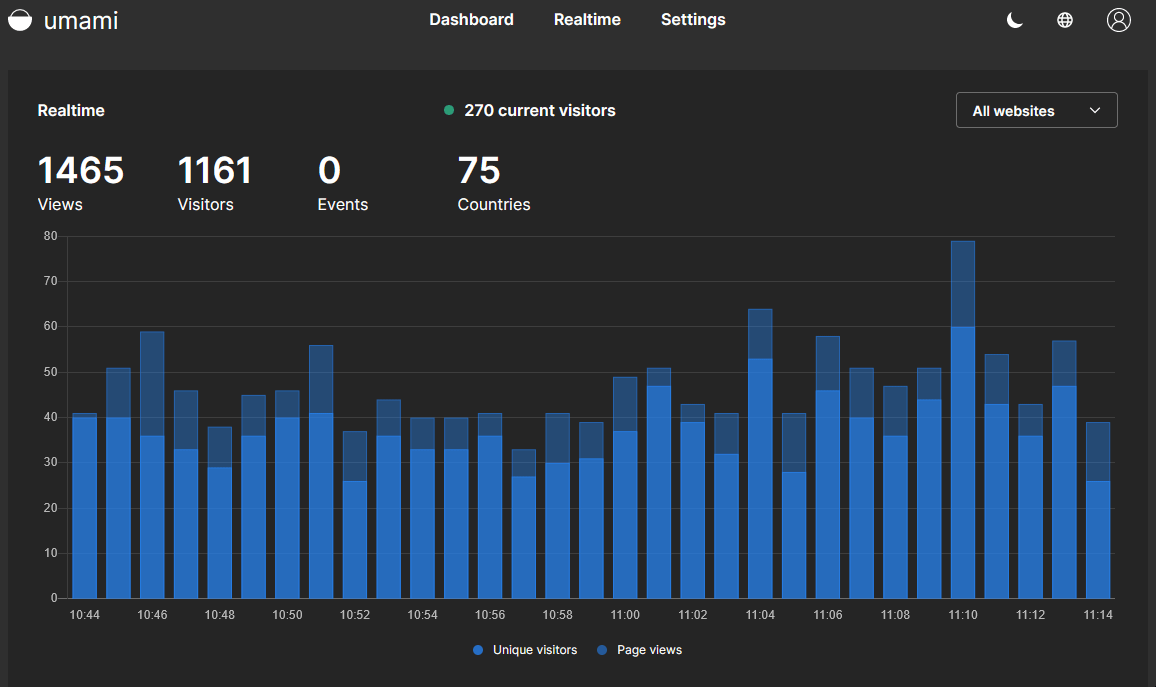
The first thought to cross my mind was check the server vitals and make sure nothing is wrong. I actually refreshed Noted.lol a few times to make sure it was still running smooth. It was still blazing fast with this much traffic and not even a hiccup in sight. Proxmox server vitals were all in the green and my heart rate began to lower again.
It wasn't until this morning that I realized how vital Cloudflare is to my homelab. And let me tell you, it really saved my bacon! Cloudflare served and cached nearly 200GB of bandwidth in a period of 24 hours!
To give you a scope of view, Noted is pretty new and has only been online since March 25th of 2022. Here is what our bandwidth flow usually looks like prior to the surge from Hacker News.
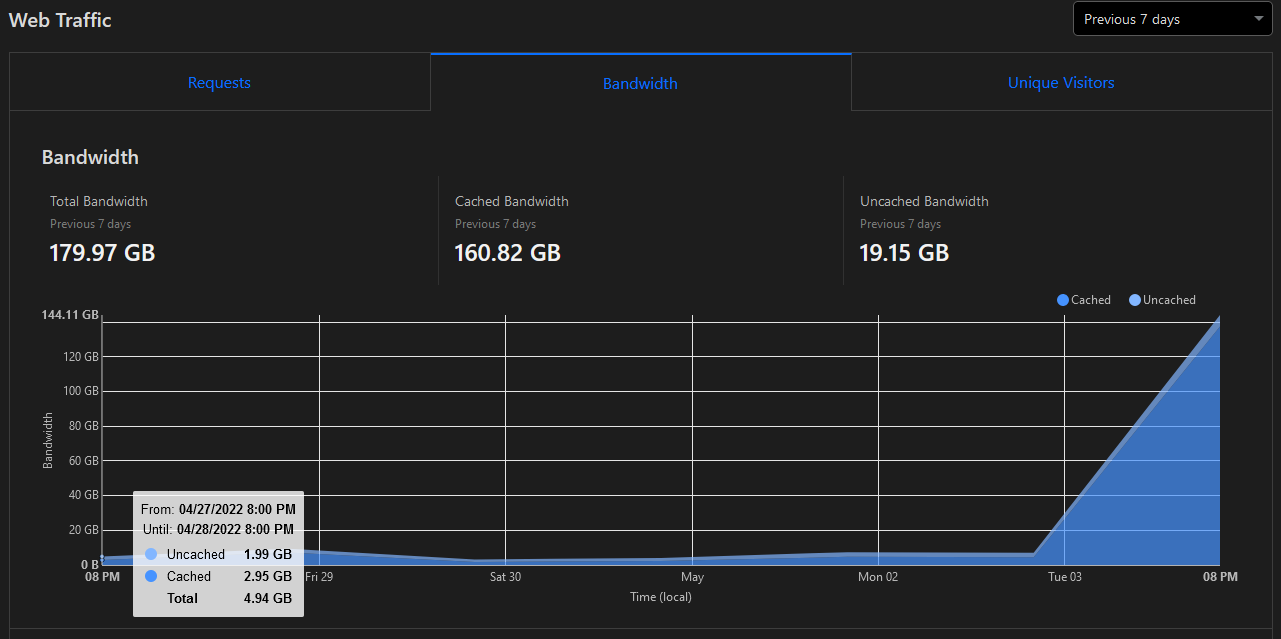
So you can see that an average day is around 2-3GB of bandwidth give or take a few. And to say I was prepared for this is somewhat true given the fact I did have Cloudflare in place. However, the hardware didn't seem to make a big difference because only a small portion of that traffic actually hit the server.
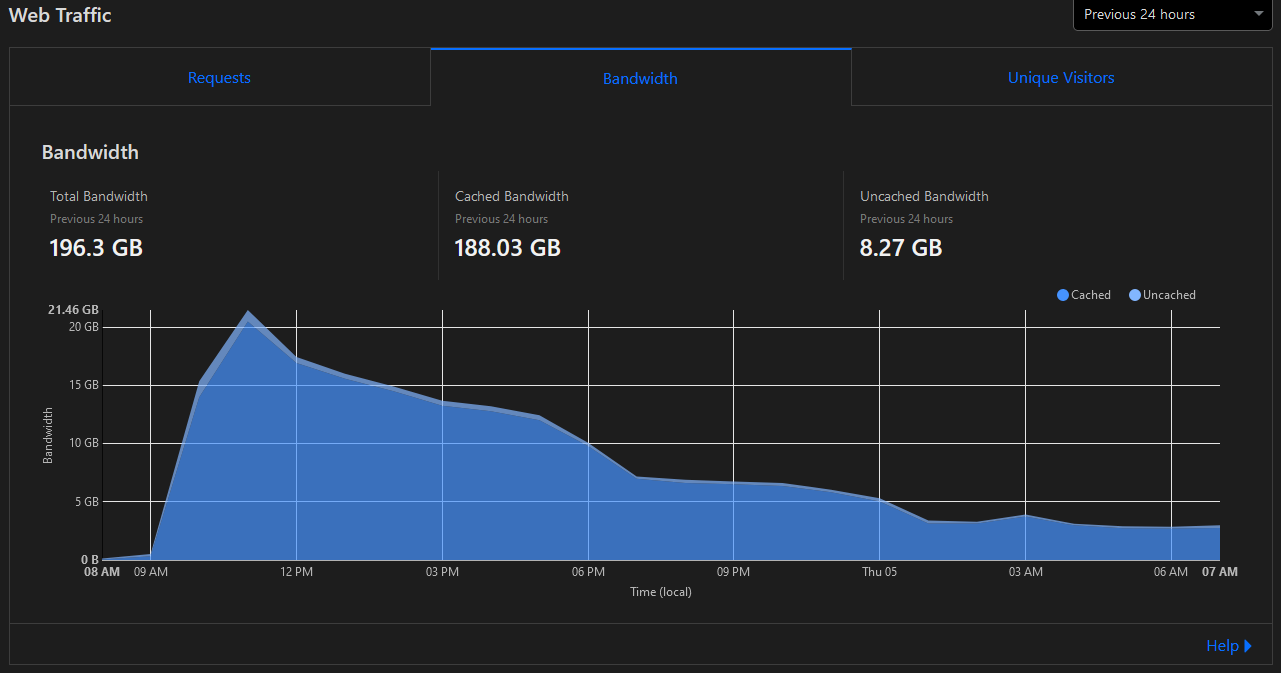
Here you can see 196.3GB of bandwidth was sent through Cloudflare. Cloudflare cached 188.03 GB of this traffic and only 8.27GB of this traffic actually hit my server. This is absolutely huge and I can only imagine how that could have effected my personal homelab.
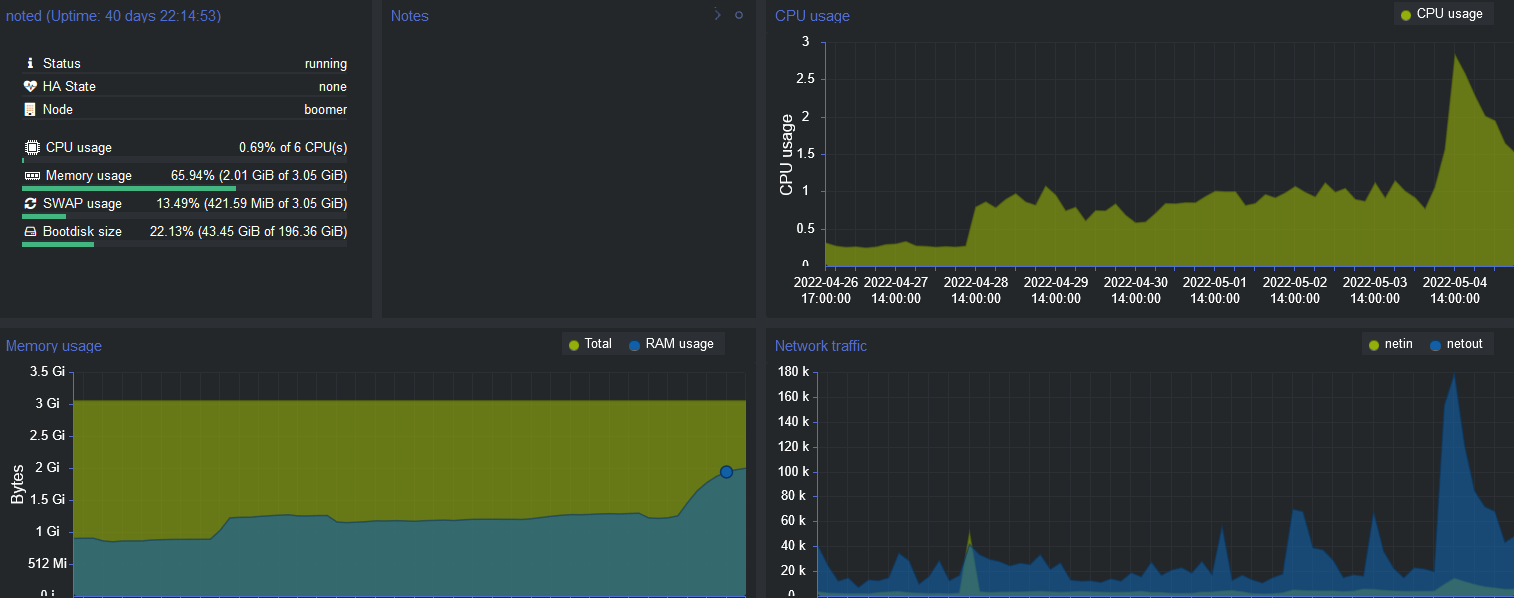
Noted runs on a LXC container with 3GB of RAM. I might need to allocate more RAM but overall the container and server as a whole held up good. I didnt notice any issues with speed or massive spikes in CPU. To say 3% usage is "massive" would be silly. We can clearly see the network traffic spike but nothing else really seemed to be effected. Noted runs on Proxmox and Docker.
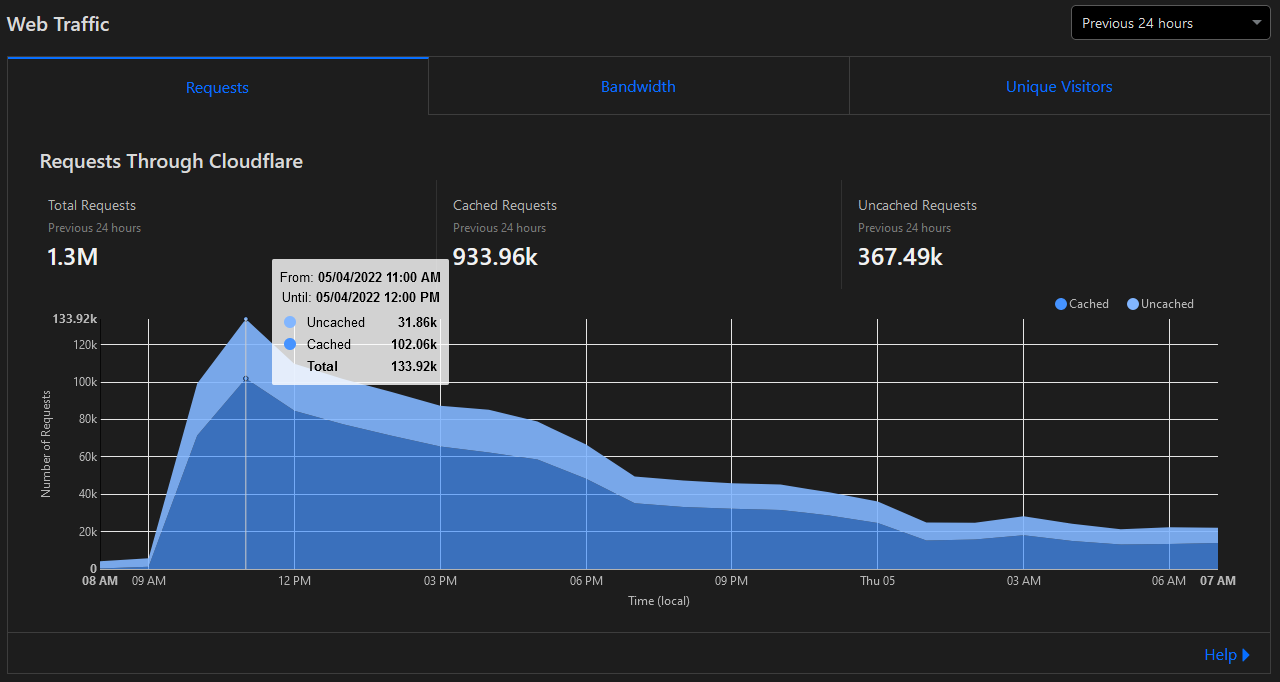
This kind of traffic would most likely have taken down my internet at the very least. Especially the initial surge at 11 AM with nearly 32k requests. I just kept thinking to myself about how smooth the site was running with this kind of traffic and honestly the only reason that was true was because of Cloudflare.
This is an open door testimony of how well Cloudflare can work for your homelab hosted websites. It can be and is a crucial part of keeping your website afloat when you need it most.
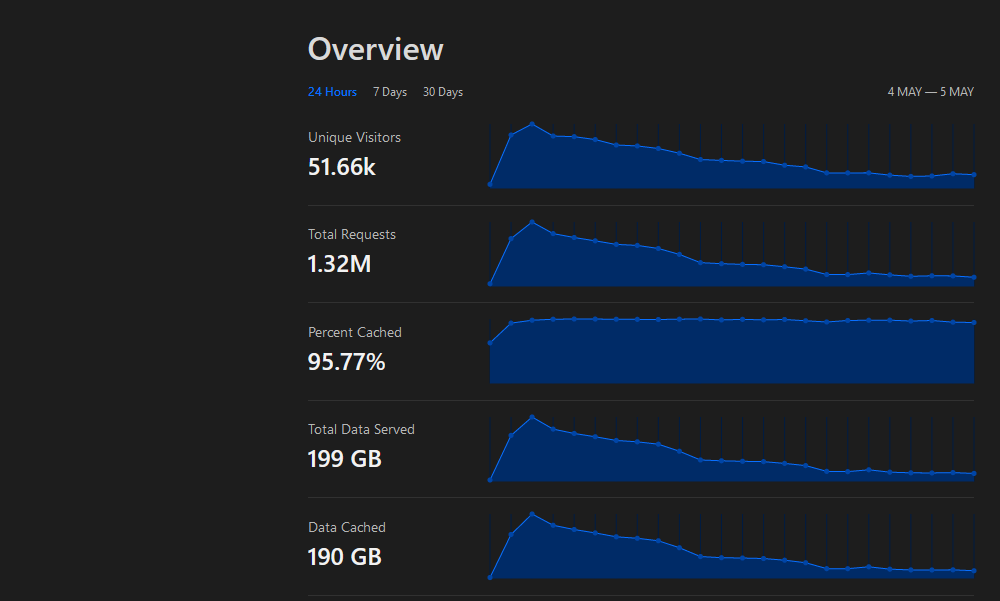
Final Notes and Thoughts
This experience was eye opening to say the least and I am quite happy with how Cloudflare handled the traffic for Noted. This not only proves it works for aspiring homelabers but also professional business solutions.
I want to thank Simon, the developer of TubeArchivist for inspiring me to create this article. They are a true champ and have become a good friend over the last several weeks!




